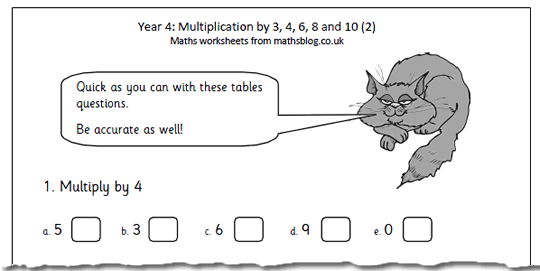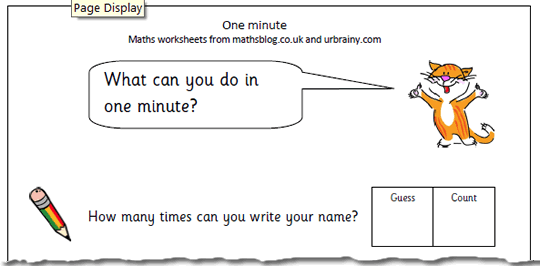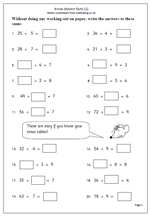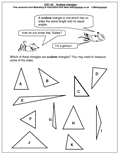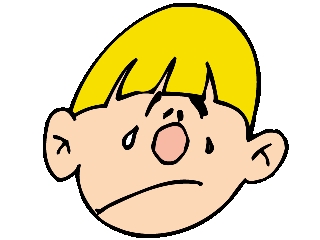 We seem to be sliding back into a bygone age with Mr Gove’s latest maths education proposals. Firstly we have ‘new’ terms for subject areas. Shape has become Geometry, even for year 1 and Handling Data has become Statistics. Tables have to be learned up to 12 x 12, although I thought we had got rid of 12 pennies in a shilling some little time ago. Of course Roman numerals now play an important part, both in Number and Time and the term ‘Roman numeral’ is stated in the Statutory requirements approximately the same number of times as the term ‘decimal’. Generally targets have become harder.
We seem to be sliding back into a bygone age with Mr Gove’s latest maths education proposals. Firstly we have ‘new’ terms for subject areas. Shape has become Geometry, even for year 1 and Handling Data has become Statistics. Tables have to be learned up to 12 x 12, although I thought we had got rid of 12 pennies in a shilling some little time ago. Of course Roman numerals now play an important part, both in Number and Time and the term ‘Roman numeral’ is stated in the Statutory requirements approximately the same number of times as the term ‘decimal’. Generally targets have become harder.
The whole premise seems to be that by making the subject harder for young children it will raise standards. Naturally, some more formal testing will also be brought in to make sure everyone knows who the failures are at the age of 5. All this to make sure that we can compete with children from our more successful European rivals, many of whom don’t start school until they are 7.
Oh well. Let’s all enjoy this lovely summer! I will be looking at these new requirements in more detail in the autumn, but as a document it is a very poor relation indeed to the original Primary Framework of 1999. Dull, lifeless and uninspiring and just three terms which come to mind.
Category: Maths news
Revising times tables in Year 4
What have we got today? It’s the second in our multiplying by 3, 4, 6, 8 and 10 worksheets, suitable for year 4 children or those who are beginning to know their tables.
The best way to learn tables is to recite them out loud eg ‘4 times 3 is 12, then shorten it to, ‘4 3s are 12’, with the ultimate aim of being able to say the product for any two single digits without having to work it out.
During the process of learning times tables plenty of practice is needed and how well they have been learned can be seen by how quickly the page is correctly answered.
Year 2: Time. What can you do in one minute?
Getting a clear concept of amount of time is important for young children. This page challenges children to complete a number of tasks in one minute, such as how tall a tower can be built using blocks/lego etc.
An important part of this is to make sure that they make an estimate/guess before starting which shows how realistic they are about time. One minute is a short time, but it is surprising how much can be achived in just 60 seconds!
This resource can be found in our Year 2 measurement section.
Single step word problems for year 6
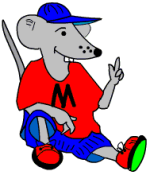 Below are two pages of maths problems written in words. They are known as ‘single step operations’ as only one mathematical process is necessary to solve them. Children find word problems very difficult, but the one step type are much, much easier than the two step.
Below are two pages of maths problems written in words. They are known as ‘single step operations’ as only one mathematical process is necessary to solve them. Children find word problems very difficult, but the one step type are much, much easier than the two step.
 Children need to be able to read and understand problems written in prose that include elements of real life, either at home or at school. They need to be able to see what processes are necessary to solve it and then lay out their answer clearly, giving some explanation. If they have had plenty of practice at writing their own number stories in earlier years they will now find these much easier.
Children need to be able to read and understand problems written in prose that include elements of real life, either at home or at school. They need to be able to see what processes are necessary to solve it and then lay out their answer clearly, giving some explanation. If they have had plenty of practice at writing their own number stories in earlier years they will now find these much easier.
Year 5 Knowing multiplication facts to help with division.
There is no doubt that most children find division harder than multiplication, yet there is little real reason for this to be so. Most division questions can be turned on their head and knowledge of times tables used to work them out. For example:
30 ÷ 5 =?? can be thought as what number times 5 makes 30?
?? ÷ 6 = 7 can be thought of as 6 times 7.
60 ÷ ?? = 10 can be thought of as what number times 10 makes 60?
The key to success with division is to have a really good knowledge of times tables.
This worksheet looks at these types of division question, all with easy numbers and no remainders and is a good assessment sheet to see if division is understood and tables known. if times tables are not known sufficiently well children will spend more time than necessary trying to work these out.
This can be found in our Year 5 Knowing Number Facts category.
Targets for Year 1
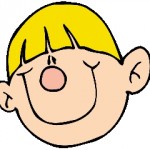 To be able to successfully help your child with maths at home it is important to have a good idea of what is expected in school. This is a list of the targets expected of children by the end of Year 1 and most teachers will be planing their work around these. Of course this does not mean that all children will achieve these targets; some will find them impossible whilst many will be able to go on further. However, they do act as good starting point.
To be able to successfully help your child with maths at home it is important to have a good idea of what is expected in school. This is a list of the targets expected of children by the end of Year 1 and most teachers will be planing their work around these. Of course this does not mean that all children will achieve these targets; some will find them impossible whilst many will be able to go on further. However, they do act as good starting point.
Counting and understanding number
By the end of year 1 children should
• know the number names (one, two, three etc) up to at least 20 and tens up to 100
(eg twenty, thirty, forty etc).
• be able to count up to 20 objects reliably. If the objects (eg buttons on a tray) are moved around they should be able to say that the total number has not changed without recounting. (Younger children will count them again if they have been moved around.)
• be able to read and write numerals up to 20
(eg 3, three, 4, four, 5 five, etc).
• be able to place numbers on a blank number line in the correct order.
• be able to say the number that is one more than or one less than any given number up to 20
(eg one less than 7).
• be able to say the number ten more than or ten less than a multiple of 10
(eg ten more than 30).
• recognise the equals sign (=) and understand it means “..is the same as..”
• use the terms, half and quarter in a practical sense
(eg give me a quarter of the orange).
Knowing and using number facts
By the end of year 1 children should
• know addition facts up to a total of 5
(eg 3 + 2).
• know all pairs of numbers with a total of 10
(eg 1 and 9, 2 and 8 etc).
• be able to work out subtraction facts from the addition facts they know.
(eg 5 -2 = 3 because 3 + 2 = 5)
• be beginning to count on and back in twos, fives and tens.
• know the doubles of all numbers up to 10
(eg double 6 is 12).
Calculating
By the end of year 1 children should
• know that addition can be done in any order.
• be able to write simple number sentences using the + and = signs
(eg 3 + 4 = 7).
• use practical methods (eg using counters) to help with addition of a 1-digit number to a 1-digit or 2-digit number
(eg 10 + 4 =).
• use informal written notes to help with addition
(eg jotting down the answer to adding 2 numbers before trying to add the third).
• understand that subtraction can mean ‘take away’.
• understand that subtraction can mean ‘find the difference between’.
• be able to use practical methods to help with subtraction of a 1-digit number from a 1-digit number
(eg using counters).
• use informal written notes to help with subtraction
(eg jotting down 5 circles and crossing out 3 for 5 – 3).
• be able to write simple number sentences using the – and = signs
(eg 7 – 4 = 3).
• understand and use the vocabulary related to addition and subtraction, including: more, add, sum, total, altogether, equals, =, take away, subtract, difference between, how much more/less, how many are left?
• be able to combine groups of 2, 5 and 10 in a practical situation
(eg combining marbles into groups of 5 marbles).
• be able to share a group of objects into 2 equal parts
(eg sweets shared equally).
Understanding shape
By the end of year 1 children should
• be able to visualise and name common 2-D shapes, including circle, triangle, rectangle and square. This includes activities such as “Find a shape which has 3 corners and 3 sides”.
• be able to visualise and name common 3-D shapes, including, cube, cuboid, sphere, cone and cylinder. This includes activities such as describing the properties of a shape by the feel of it, before seeing it.
• be able to make patterns and pictures with 2-D shapes and make models with 3-D shapes such as Lego.
• begin to describe the position of shapes, using terms such as: over, under, underneath, above, below, outside, inside, in front, behind, beside, before, after, next to, opposite, between, middle, centre, edge, corner, top, bottom, side. This is where activities such as moving furniture around a toy house are very important or placing counters on a board game.
• be using everyday language to describe direction, such as: left, right, up, down, forwards, backwards, sideways, across, along, through, to, from, towards, away from.
• begin to be able to describe movements in a straight line and turning. At first turning will only be by whole and half turns but it is important to recognise shapes that turn about a point, such as a pair of scissors.
• Once again it must be emphasised that most of this work is done orally with practical equipment. Toys, board games, may seem like playing to us but are invaluable learning experiences.
Measuring
By the end of year 1 children should
• understand and use the basic vocabulary related to length, mass and capacity.
For length: long, short, tall, high, low, wide, narrow, deep, shallow, thick, thin, far, near and words of comparison eg longer.
For mass: weight, weighs, heavy light, balances.
For capacity: full, empty, half full, holds.
• be able to make direct comparisons between two items eg comparing the length of two pencils, the weight of two parcels, the capacity of two cups. A set of balance scales is very useful for this kind of work.
• begin to use non-standard measures
(eg the jug holds 6 cups of water, the table is about 7 rulers long).
• be making sensible estimates and guesses related to length, mass and capacity. Standard units such as cm, km, kg are not used at this stage.
Using and applying maths
By the end of year 1 children should
• solve problems involving counting, addition, subtraction, doubling, halving, measures and money
(eg a toy shop, paying and giving change with numbers up to 10).
• describe and solve simple puzzles or problems
(eg How many ways can you score 4 rolling two dice?).
• sort information, shapes or objects and display the results using pictures
(eg sort cubes by colour).
• describe simple patterns involving numbers or shapes
(eg continue a pattern of repeated squares and circles).
• describe ways of solving a puzzle or problem orally
(eg talk about or draw what coins could be used to make 6p).
Resource of the Week: know number facts in year 2
A lot is expected of children in Year 2, especially what they should know off by heart when calculating. By the end of the year they should:
• know all addition facts for two numbers up to a total of 10. (eg 4 + 5.)
• be able to derive subtraction facts for numbers up to 10. (eg if they know that 6 + 3 = 9, they can instantly work out that 9 – 6 = 3.)
• know all the pairs of whole numbers which total 20. (eg 16 + 4.)
• know all the pairs of multiples of 10 which total 100. (eg 30 + 70.)
• know the doubles of whole numbers up to a total of 20. (eg double 7.)
• understand that halving is the inverse of doubling and hence derive halving facts from their knowledge of doubling. (eg if double 8 is 16, then half 16 is 8.)
• recall 2, 5 and 10 times-tables. (eg know 5 x 6.)
• work out related division facts. (eg if 5 times 2 is 10, then 10 divided by 5 is 2.)
Now, that is quite a lot to know with instant recall, and they will need plenty of practice to achieve this. Why not go to our Year 2 Knowing and Using Number facts to help them on their way?
Resource of the week: adding 2-digit numbers mentally

One of the keys to success with maths is being able to calculate mentally. There should be no need to resort to written methods or to a calculator to add two 2-digit numbers; mental calculations should rule!
Having said that, these are not easy, and a number of skills need to have been learned to do these in an efficient manner.
For example: looking at ‘add 46 to 67’.
There a a number of ways to do this. Perhaps the most efficient is to add 40 to 67 to make 107 and then add on the extra 6 to make 113.
The second part of the sheet is a reminder of some of the ways that addition questions can be phrased.
Measuring in kilometres
 Children in the UK get far less experience at using kilometres than most Euoropeans because we have decided to keep with the mile for most of our longer measuring. Of course this is a nonsense: to start with a system using mm, cm and metres and then switch to a completely different system ie miles does not make any sense at all! Until our road signs are changed there is little hope of any improvement in this situation.
Children in the UK get far less experience at using kilometres than most Euoropeans because we have decided to keep with the mile for most of our longer measuring. Of course this is a nonsense: to start with a system using mm, cm and metres and then switch to a completely different system ie miles does not make any sense at all! Until our road signs are changed there is little hope of any improvement in this situation.
Whilst there are 1760 yards in a mile the much simpler metric system has the easy to calculate 1000 metres in a kilometre.
At this stage children should be beginning to write half a kilometre as 0.5 km but 1/2 km is acceptable. This free maths worksheet concentrates on writing half kilometres as decimal fractions.
Scalene triangles
A lot of work is done on triangles in Primary Schools and by year 5 and 6 most children are familiar with the properties of right angled triangles, equilateral triangles and isosceles trinagles. However, fewer children know about the scalene triangle. A scalene triangle is one which has no sides the same length and no equal angles. It is worth pointing out that right angled triangles could also be scalene if all the sides are different lengths.
Thanks to MathSphere Ltd for this worksheet: and there are many more similar pages, both on their site and part of the ‘It’s All Figured Out’ CD.
